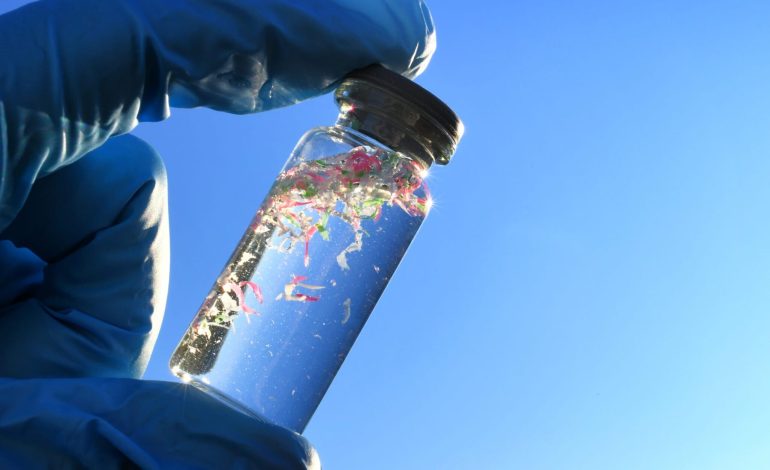Let’s face it: plastic is no longer just wrapping our food or floating in oceans — it’s inside us. From blood and lungs to breast milk and brain tissue, microplastics have made themselves at home in the human body. The big question now is: What are they actually doing to our health?
In a sleepy English town, researchers have been collecting soil and crop samples since the 1840s. Originally meant to study wheat growth, these dusty bottles now double as a time capsule for human pollution — including the first traces of microplastics. It’s clear: plastic started quietly settling into the environment sometime after the 1920s, and it hasn’t slowed down since.
By some estimates, we could be consuming over 50,000 microplastic particles a year — likely more. They’re in our food, our water, the air we breathe, and even the tea we steep. Now, scientists are beginning to understand where all those particles go, and what they might be doing.
Earlier this year, a small group of volunteers in London downed plastic-laced beverages — think: tea brewed in plastic bags or microwaved liquids in plastic containers — as part of a “human challenge trial.” The goal? Track how microplastics enter and move through the body. Researchers took blood samples for 10 hours to see how much plastic was absorbed into the bloodstream.
“Hot water and heat are some of the worst-case scenarios,” said Dr. Stephanie Wright, the Imperial College researcher leading the study.
Her upcoming results will give us our first real numbers on how much plastic enters our bodies from everyday habits.
In the last year, a wave of studies has raised eyebrows — and alarms. Researchers in China found microplastics embedded in bone and muscle tissue during joint surgeries. Meanwhile, Italian scientists detected plastics inside the carotid arteries, which carry blood to the brain. Patients with these plastic-laced plaques had a 4.5-times higher risk of stroke or heart attack.
And in the most jarring find yet: researchers discovered microplastics in human brains — with up to 10 times more plastic found in people who had dementia.
“We were shocked,” said Matthew Campen, who led the brain study at the University of New Mexico.
Campen believes that the brain’s fatty tissue might actually attract and trap plastic particles. Worse yet, the brain’s protective barrier becomes weaker with diseases like dementia, making it easier for plastic to sneak in.
While there’s still no smoking gun linking microplastics to specific diseases, many experts believe they’re playing a supporting role in chronic health issues — like heart disease, cognitive decline, and even cancer.
“They’re not asbestos,” said Fay Couceiro, an environmental pollution expert. “But they could be making our bodies more vulnerable to illness over time.”
The challenge? “Microplastic” is a catch-all term. A single bottle of water might contain 240,000 different plastic particles, made from a wide range of materials. Some can carry heavy metals, hormone-disrupting chemicals, or even drug-resistant genes — basically giving bacteria extra tools to fight antibiotics.
Some scientists, like Austrian researcher Verena Pichler, worry that chronic inflammation from plastics could increase the risk of diseases like colorectal cancer. And since some plastic particles are small enough to enter human cells, they could be quietly doing damage at the DNA level.
Animal studies show that just tiny amounts of microplastics — as little as 10 micrograms per kilo of body weight per day — can trigger inflammation and metabolic changes. Researchers are now testing these effects in artificial human blood vessels grown in labs.
The impact of microplastics may not be the same for everyone. People with chronic illnesses, older adults, or those with respiratory conditions like asthma may be more vulnerable. Couceiro is currently running studies on patients’ mucus samples and indoor air quality, trying to link exposure to worsening symptoms.
And it’s not just about prevention — it’s about treatment. Microplastics might interfere with how cancer drugs work in the body by binding to them and blocking their absorption.
Researchers agree: we need to find out how much plastic the human body can safely tolerate — if that’s even possible. Until then, they’re urging manufacturers to rethink how we use plastic, especially in medical gear, food packaging, and household items.
“Microplastics are everywhere,” said Couceiro. “Even while you’re asleep, you’re breathing them in.”
The original story by David Cox for BBC.










The latest news in your social feeds
Subscribe to our social media platforms to stay tuned